Related Research Articles

The Northeast Passage is the shipping route between the Pacific and Atlantic oceans, along the Arctic coasts of Norway and Russia. The western route through the islands of Canada is accordingly called the Northwest Passage (NWP).

The Laptev Sea is a marginal sea of the Arctic Ocean. It is located between the northern coast of Siberia, the Taimyr Peninsula, Severnaya Zemlya and the New Siberian Islands. Its northern boundary passes from the Arctic Cape to a point with co-ordinates of 79°N and 139°E, and ends at the Anisiy Cape. The Kara Sea lies to the west, the East Siberian Sea to the east.

Lenin was a Russian icebreaker originally built in England for the Russian Empire. Launched in 1916, before going into service for Russia, the ship first served in the Royal Navy during the Allied intervention in the Russian Civil War. It was eventually acquired by the Soviet Union and served through World War II, and was finally scrapped in 1977.
William (Bill) Barr is a Scottish historian now resident of Calgary, Canada, with a specific interest in the history of exploration of the Arctic, and to a lesser degree, the Antarctic. He holds degrees in Geography from the University of Aberdeen, Scotland and McGill University, Montreal, Canada. From 1968 until 1999 he was a member of the faculty of the Department of Geography, University of Saskatchewan, Saskatoon, Canada and is now a professor emeritus there.
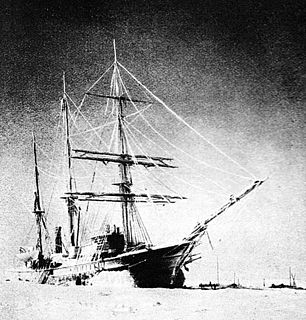
Zarya was a steam- and sail-powered brig used by the Russian Academy of Sciences for a polar exploration during 1900–1903.

The Komsomolskaya Pravda Islands are an archipelago in the far north of the Russian Federation. The islands are uninhabited and are covered with tundra vegetation, shingle and ice.

The icebreaker Fyodor Litke was active in the Soviet era in the Arctic, until the late 1950s. It was built in 1909 in England for the Saint Lawrence River service and initially named CGC Earl Grey after Albert Grey, Governor General of Canada. After four years in Canada it was sold to the Russian government and eventually renamed Fyodor Litke in honour of the Arctic explorer Fyodor Petrovich Litke.
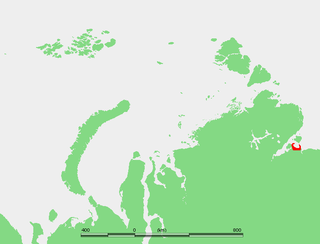
Nordvik was a settlement and a harbour-port in Krasnoyarsk Krai, Russian SFSR, Soviet Union, located on the Khatanga Gulf at the mouth of the Khatanga River, on the Uryung Tumus Peninsula, west of Nordvik Bay.

The Taymyr was an icebreaking steamer of 1200 tons built for the Russian Imperial Navy at St. Petersburg in 1909. It was named after the Taymyr Peninsula.
Steamer Tovarishch Stalin was a Soviet freighter of about 3,100 tonnes displacement, active in the Arctic during the 1930s.
Steamer Pravda was a Soviet merchant freighter of about 3,100 tonnes displacement, which was active in the Soviet Arctic during the 1930s. This ship had been normally used for carrying timber. It was named after Soviet newspaper Pravda.

Nordvik Bay is a gulf in the Laptev Sea in the north of Russia. Lat 73° 45' and long 112°.

The Chief Directorate of the Northern Sea Route, also known as Glavsevmorput or GUSMP, was a Soviet government organization in charge of the maritime Northern Sea Route, established in January 1932 and dissolved in 1964.

Maria Pronchishcheva Bay is a deep gulf in the Laptev Sea. It is located about 75 km north of the mouth of the Khatanga Gulf, on the eastern side of the Taymyr Peninsula.

The Dunay Islands, or Duunay Aryta, is a group of islands in the Laptev Sea. They are located close to the mouths of the Lena River, off the northwestern shores of the Lena Delta.

Preobrazheniya Island, meaning 'Transfiguration Island', is an island in the Laptev Sea, Russia.
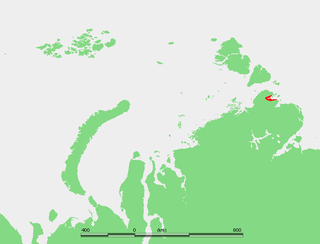
The Simsa Bay or Bay of Sims is a gulf in the Laptev Sea on the coast of the Taymyr Peninsula.

The Faddey Bay is a gulf in the Laptev Sea on the eastern coast of the Taymyr Peninsula. It measures about 47 km from its innermost point in the southwest, the delta of the Pregradnaya River, to its broadest opening to the sea in the northeast. Its average width is 21 km.
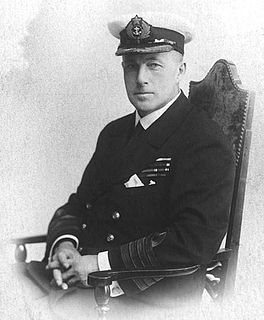
Fyodor Andreyevich Matisen was an officer of the Russian Imperial Navy, hydrographer, and explorer.
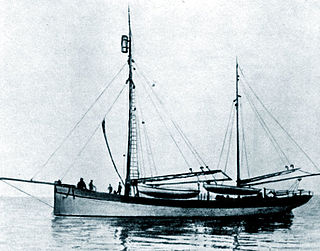
The Rusanov expedition, led by geologist Vladimir Rusanov, was a 1912 Russian expedition to the Arctic, with an initial objective of establishing mineral claims on Spitsbergen. Following completion of its official programme, Rusanov expanded the expedition's scope to include an investigation of the Northeast Passage, though it remains unclear exactly which route he proposed to take. Rusanov's ship Hercules reached Novaya Zemlya in August 1912, where he sent a message that he was continuing east; this was the last ever heard of the expedition and its 11 personnel.
References
- Barr, William (June 1982). "The First Soviet Convoy to the Mouth of the Lena" (pdf). Arctic . 35 (2): 317–325.
- Barr, William (March 1980). "The Drift of Lenin's Convoy in the Laptev Sea, 1937 - 1938" (pdf). Arctic . 33 (1): 3–20.